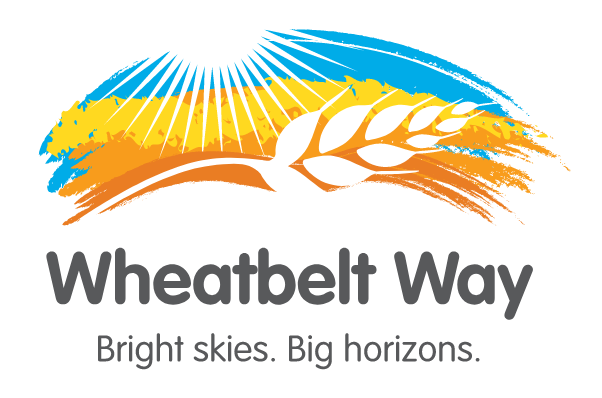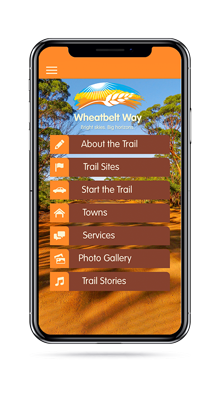Seeding is the big event of the agricultural year in the Wheatbelt Way.
It’s the process by which farmers’ plant wheat, oats, barley, canola, and various other grains in the hope that it will rain and they will be able to harvest a crop later in the year to sell.
Farmers have to spend enormous amounts of money to buy fertiliser, fuel, and other inputs that are required to put a crop in, so seeding always represents a huge gamble.
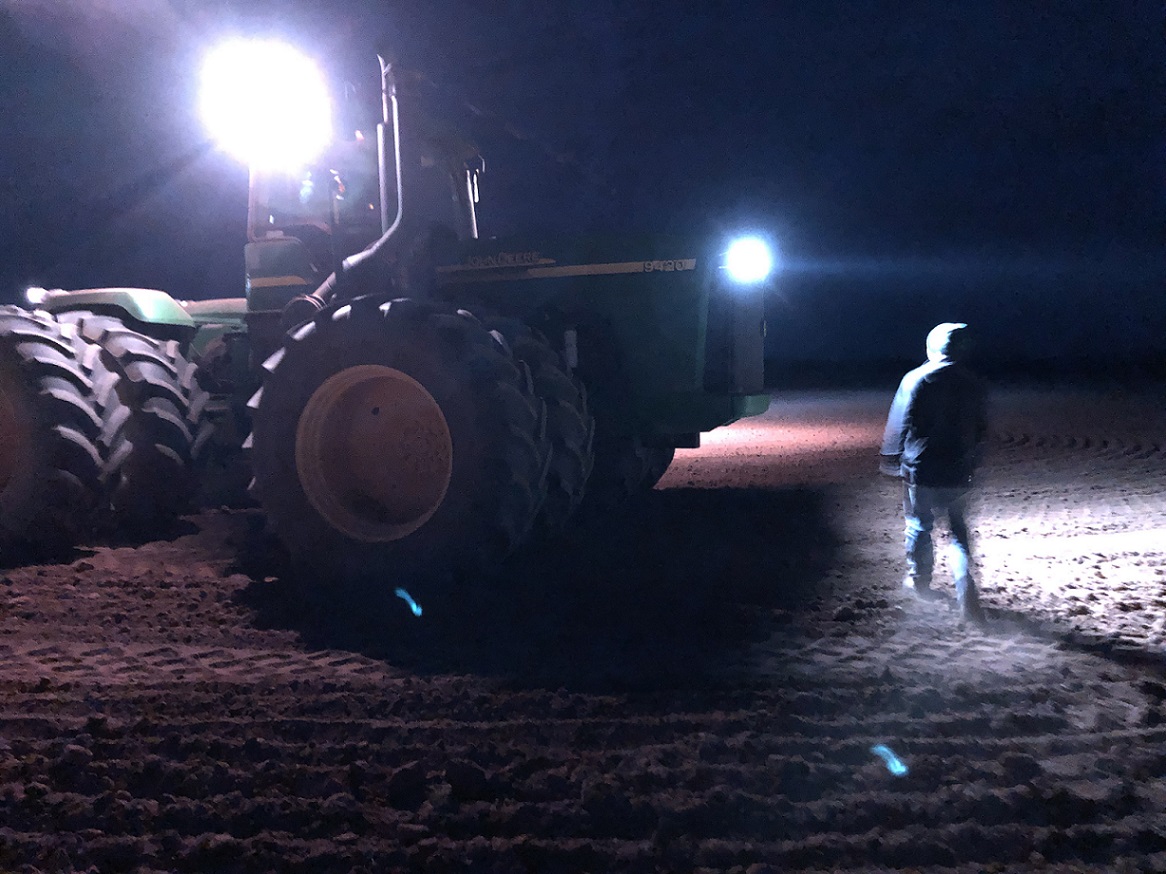
As a farmer I know said to me once, “every year you have to decide if you are going to have another roll of the dice.”
Long hours are worked and all hands are on deck. The days are short and the pressure is always on, with a race to get the crop in before the rain and a germination.
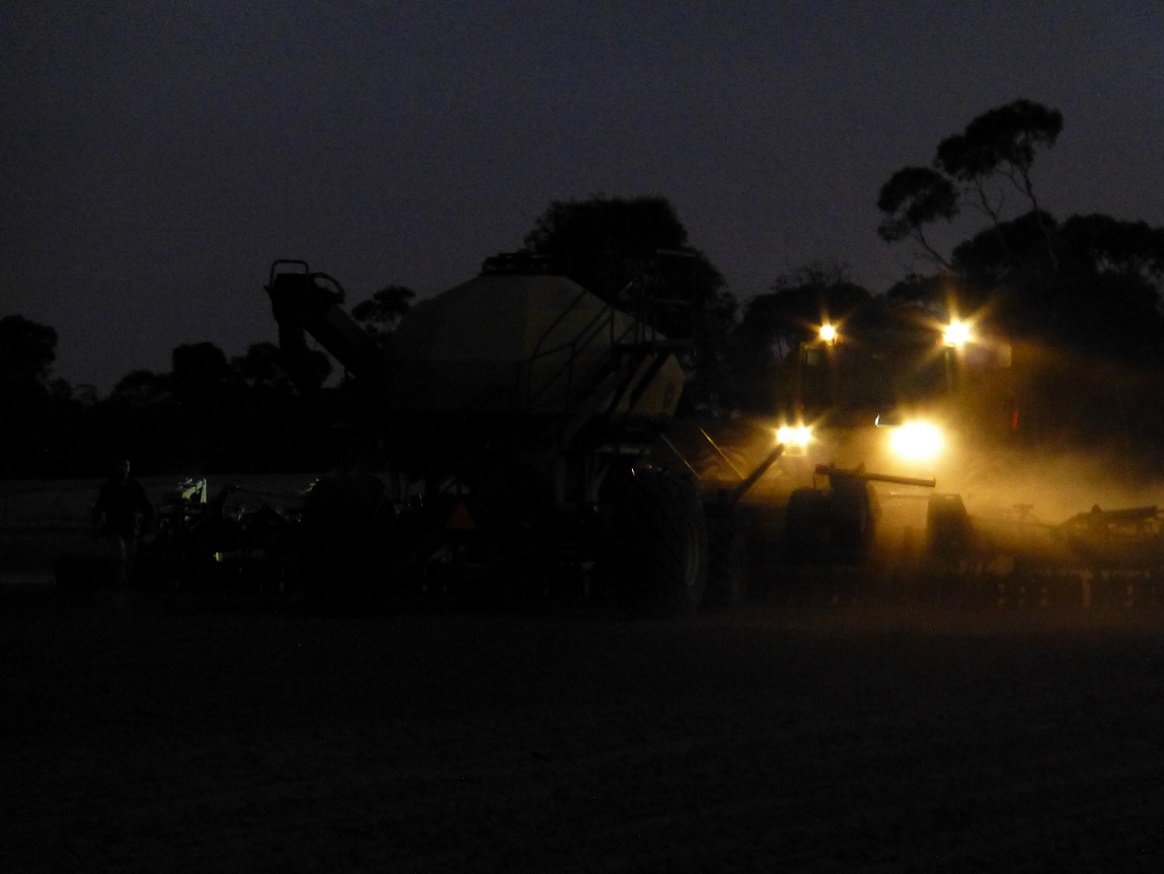
The objective of seeding is to achieve a good crop to harvest, like the one shown in the below photograph.
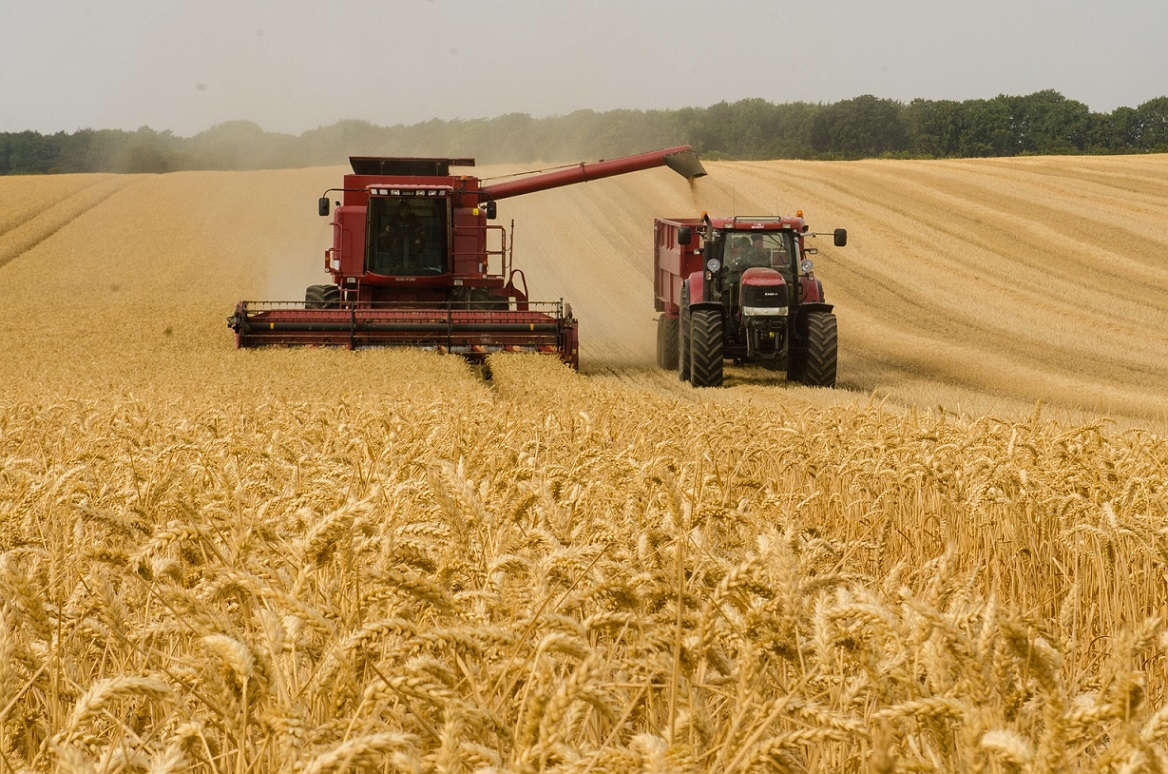
However, if the rains don’t come at the right time, farmers can end up with nothing to harvest by the end of the year. Most farmers will experience such outcomes more than once, no matter where they farm. This makes farmers resilient and irrepressible people, with tried and tested stress management skills!
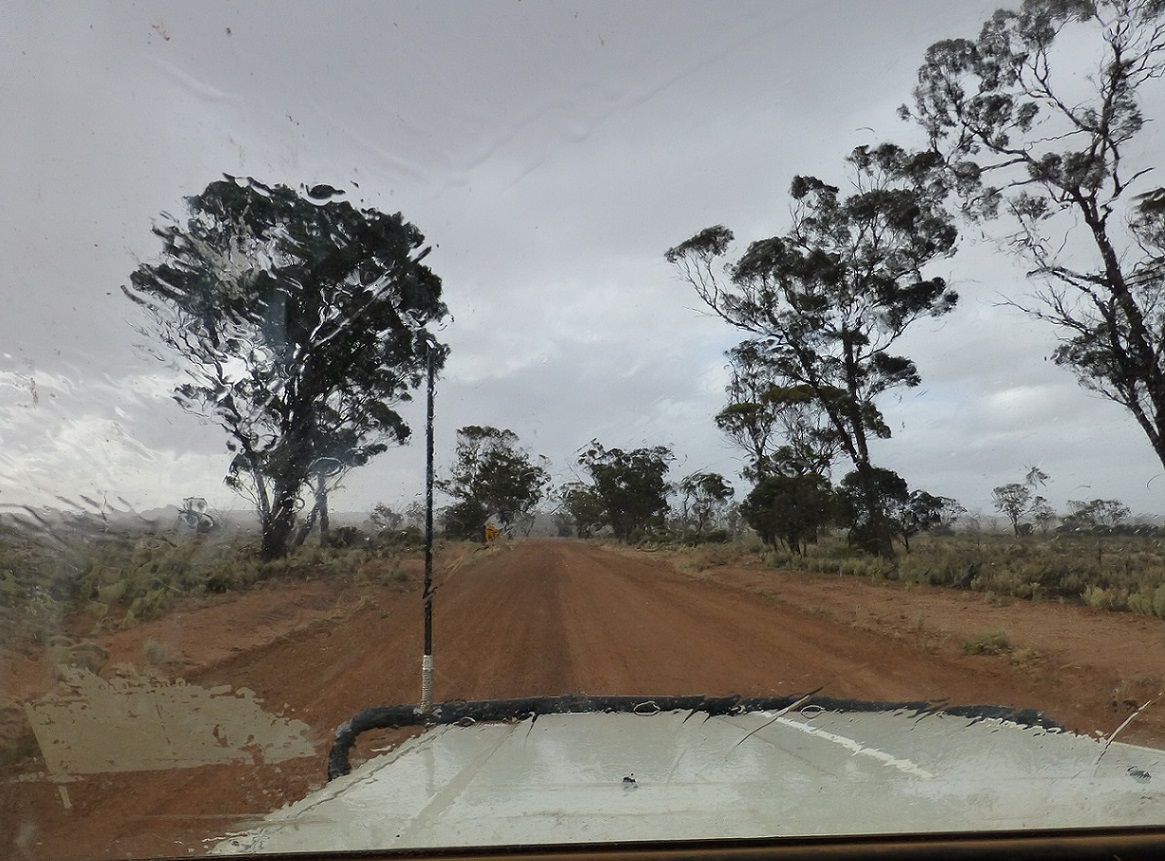
Rain on a windscreen is what every farmer wants to see at the end of seeding.
During seeding you will see mammoth machinery towed by equally mammoth tractors gracing the paddocks, inserting precious grains of seed and fertiliser into the soil.
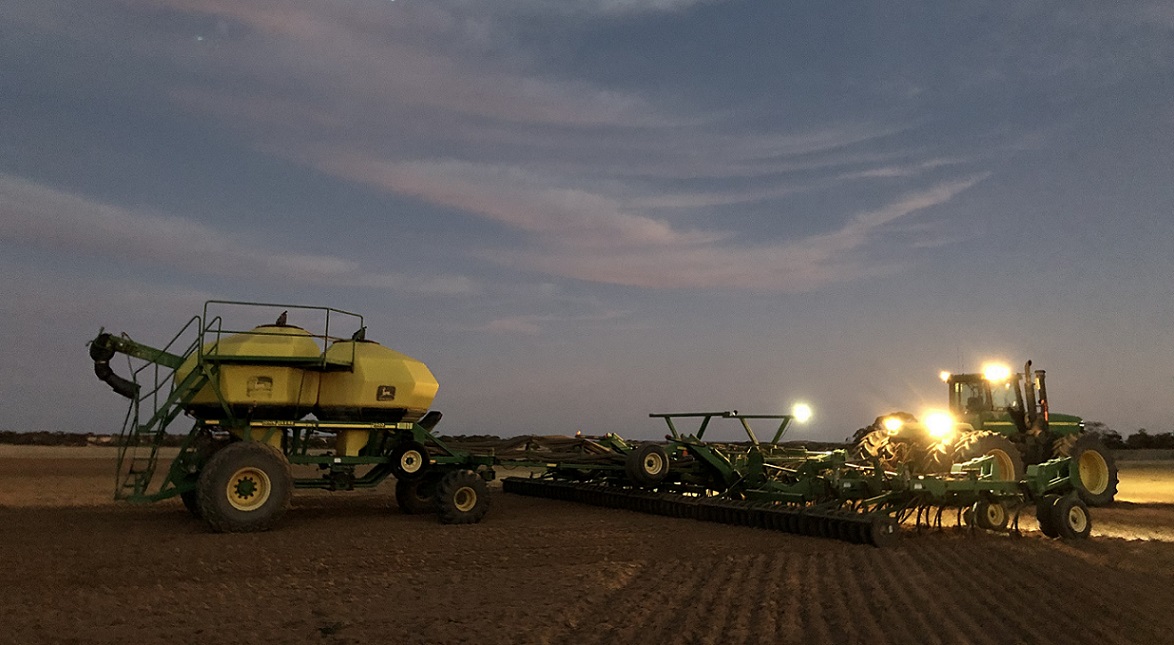
The basic equipment needed for seeding is a large tractor, which tows a “bar” and a “box” or “bin.” After the tractor sometimes the bar will come first and sometimes the box will come first, but either way, the same three components will always be present.
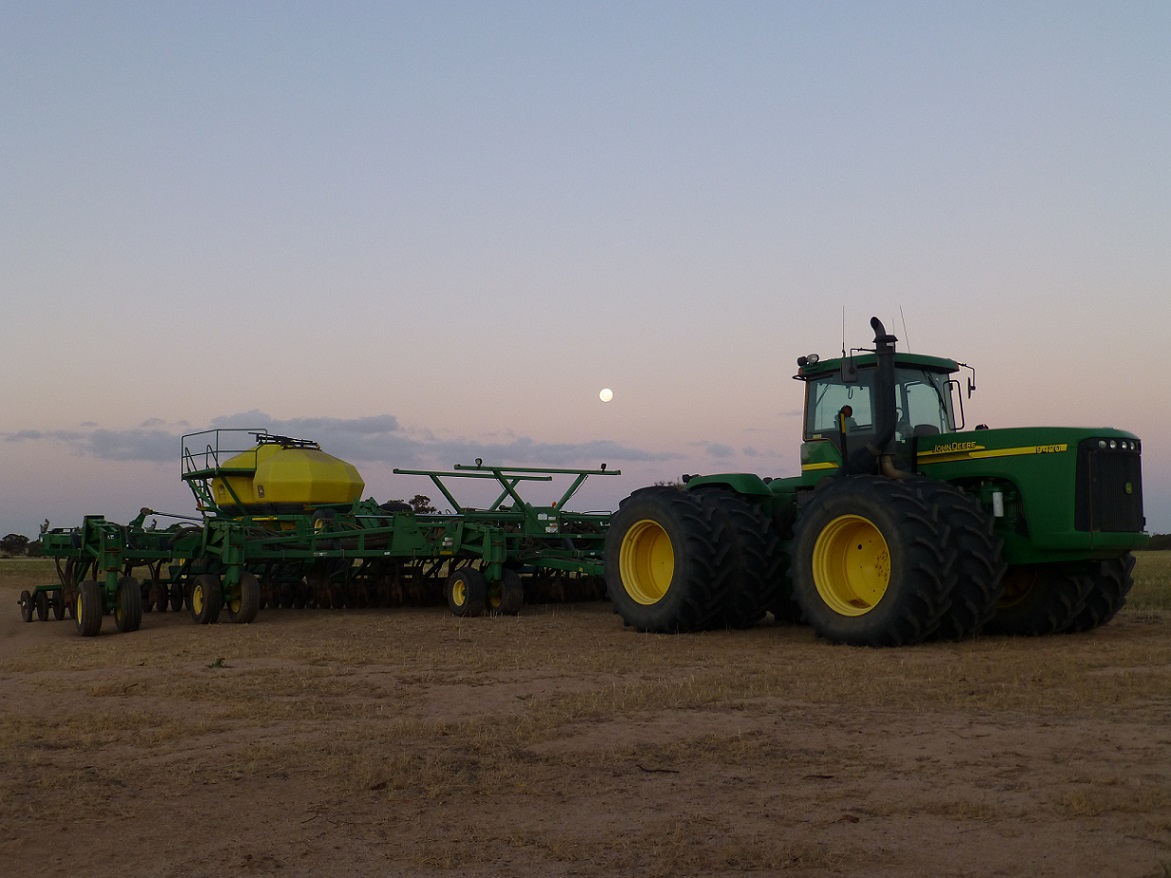
The tractors that undertake the seeding operation cost around $500,000 to buy new and have an engine that ranges between 400 and 600 horsepower, which literally means that you would need 400 to 600 draft horses to do the same work!!!
The tractor in the photograph below has dual tyres, (with each tyre worth $2,000 – $3,000), though some tractors have single tyres and still others have “triples,” or three tyres at each axle. Other tractors don’t use tyres at all and are instead propelled by a moving rubber track.
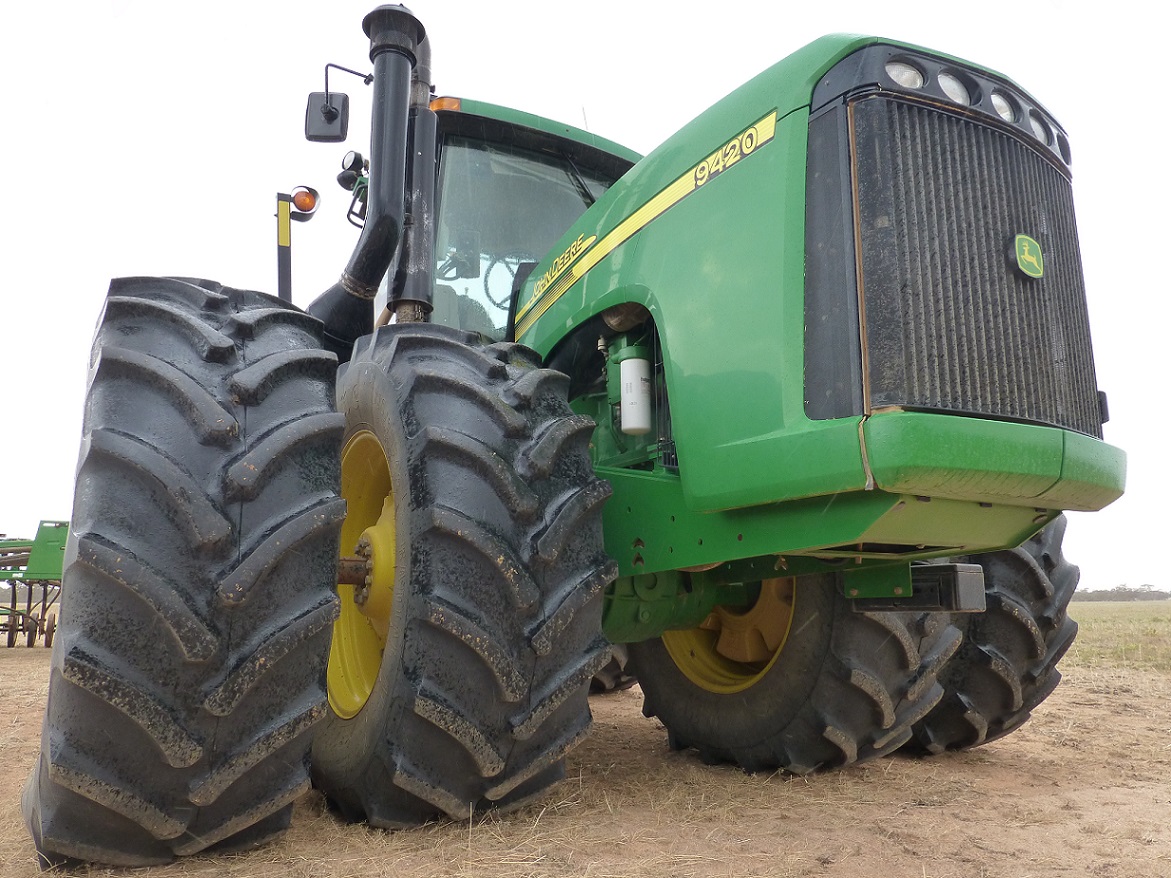
The “box” or “bin” that is towed behind the tractor is simply the large container that holds the seed and fertiliser that will go into the soil. As shown in the below photograph, the box is actually made up of two separate boxes, one for seed and one for fertiliser. The seed and fertiliser is fed through with the assistance of a fan that helps blow appropriate amounts of each into the hoses on the bar.
The little balcony at the top of the “box” is unfortunately not for leisurely cocktails at sundown, it is used to assist the farmer to fill up with seed and fertiliser when required!
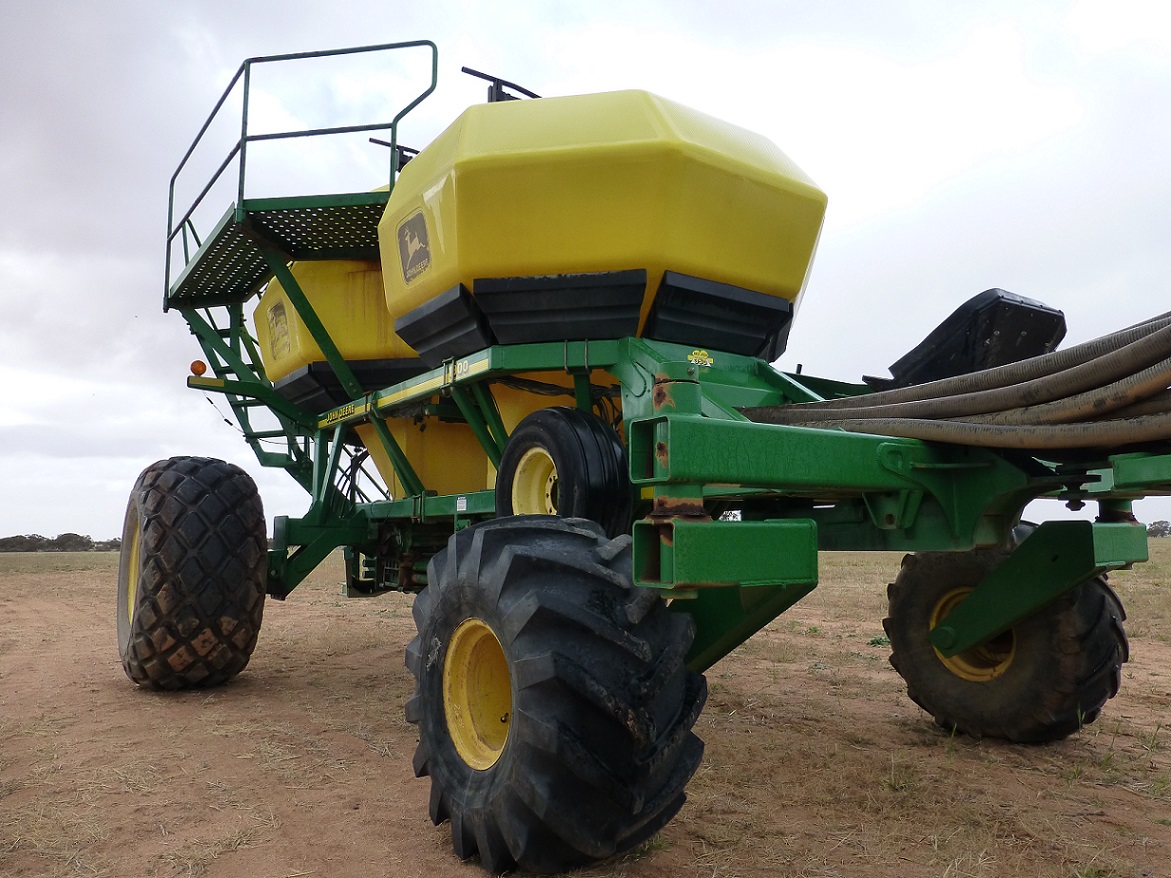
The bar is the large comb that digs through the soil and inserts the seed and fertiliser into it. The bar looks a bit like Willy Wonka’s Chocolate Factory, as it is covered in all manner of tubes and hoses delivering the good stuff to the soil. In a series of beautifully orchestrated movements, the bar’s pointed steel tynes open up the soil, a cylindrical tube called a seed boot drops the seed and fertiliser into the soil, and then a press wheel covers the soil over again.
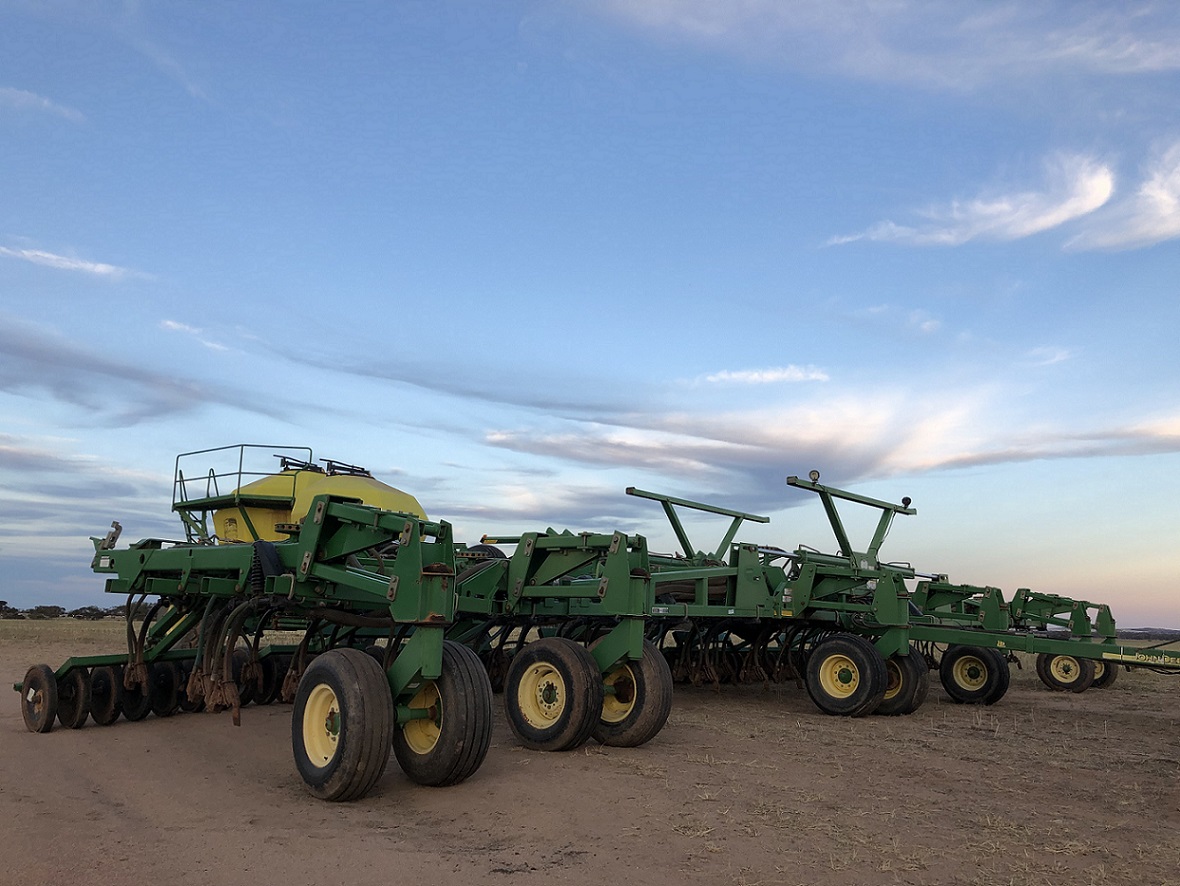
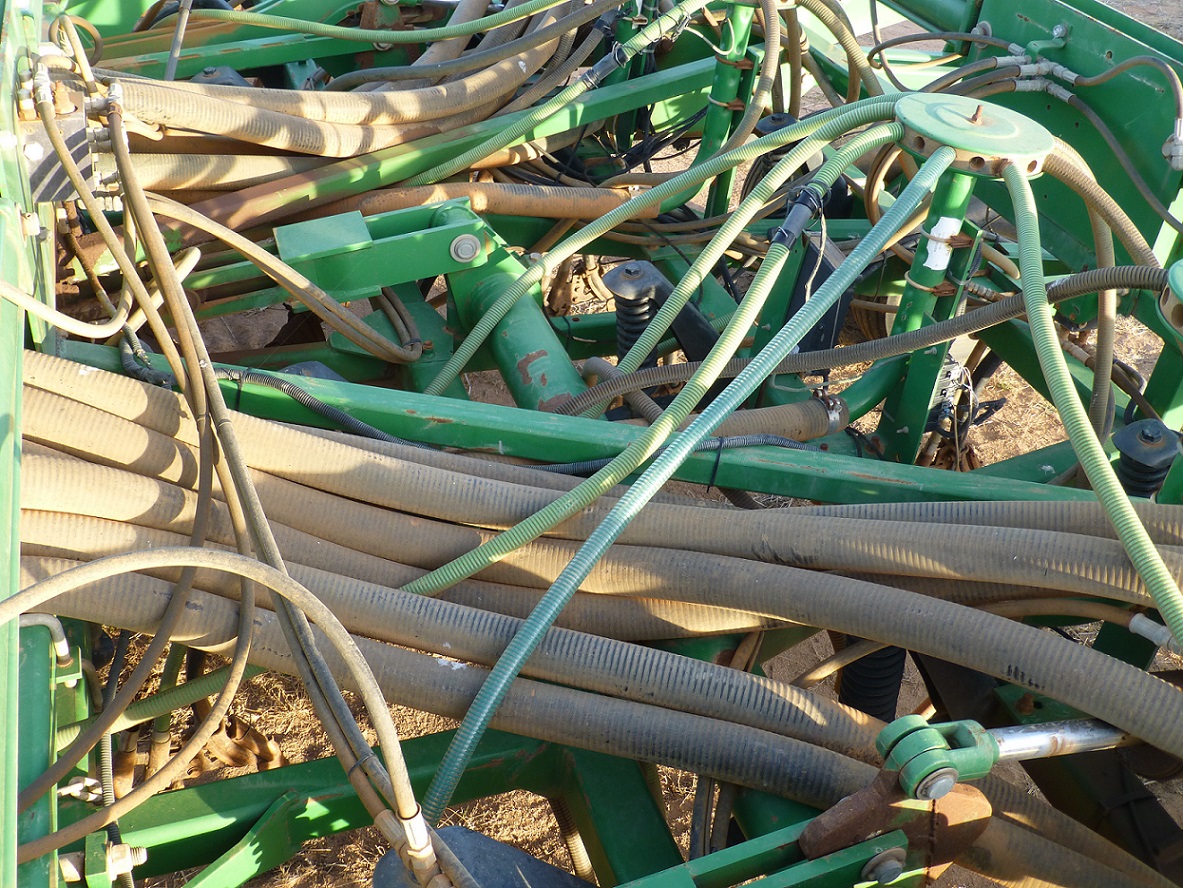
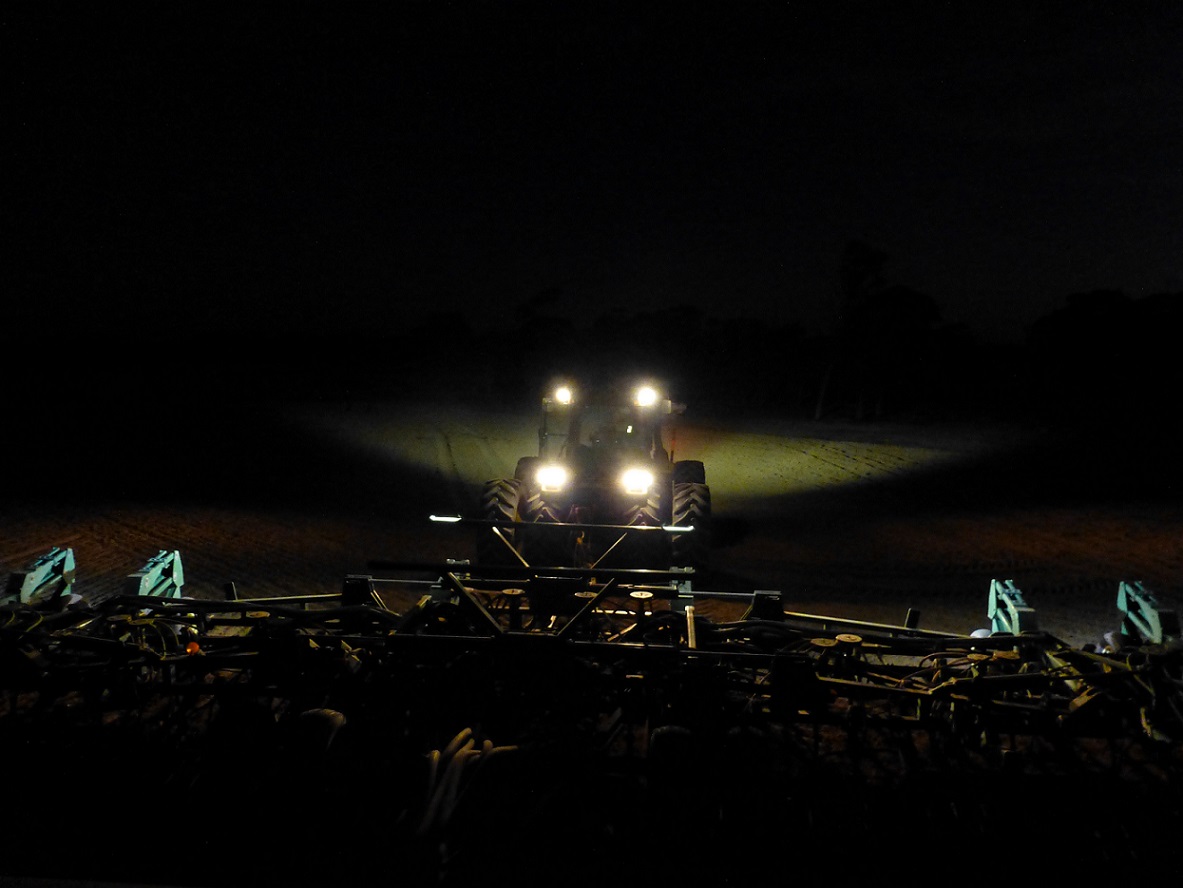
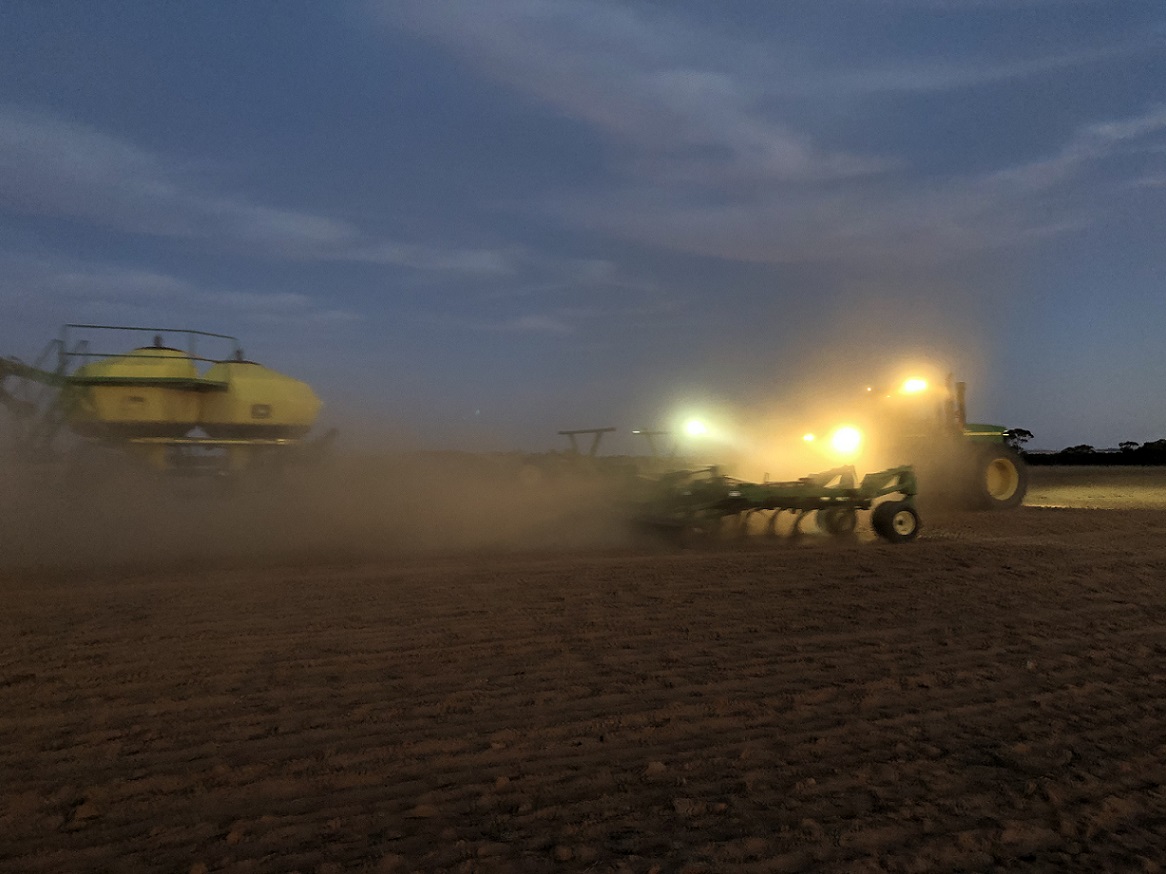
The seeding bar shown in the photograph above is 50 foot long. Bars used across the Wheatbelt Way range from 40 foot (12 metres) to 80 foot (24 metres) in length. Due to the length of the bar, when it is towed along a road it has to be folded up like in the below photograph, and even then it still takes up most of the road.
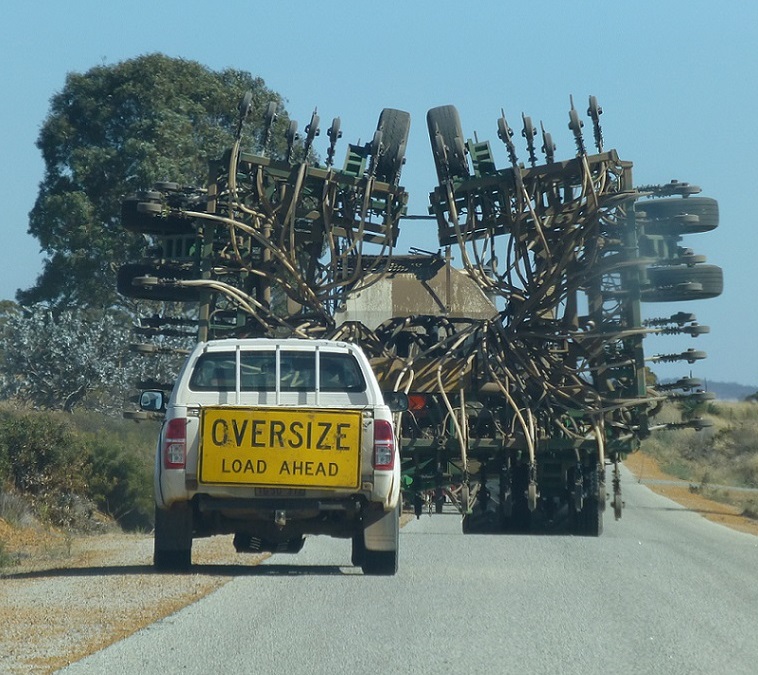
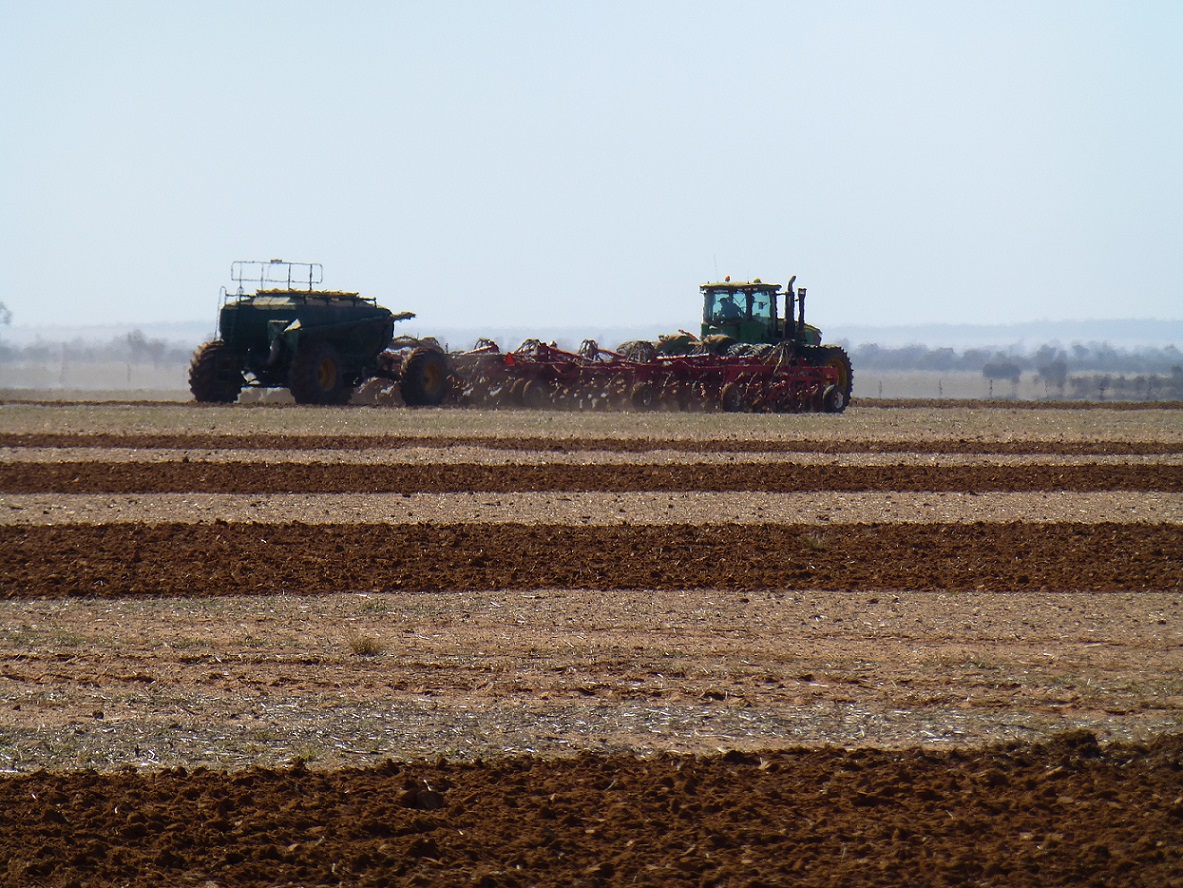
As a result of the size of the bar, driving a tractor during seeding requires vigilance and concentration. Otherwise, the bar can very easily become entangled with fences, trees, power lines, granite rocks and sheds. Some of the most popular seeding bars cost $300,000 – $400,000 without even considering the cost of the bin or the tractor, so any damage is extremely expensive. Most tractors are also now equipped with GPS systems that enable them to operate on “auto” steer, so operators have occasionally fallen asleep and driven into trees at the end of a paddock. No one wants to be the person who has ripped up an entire fence and bought it home with them at the end of the shift!
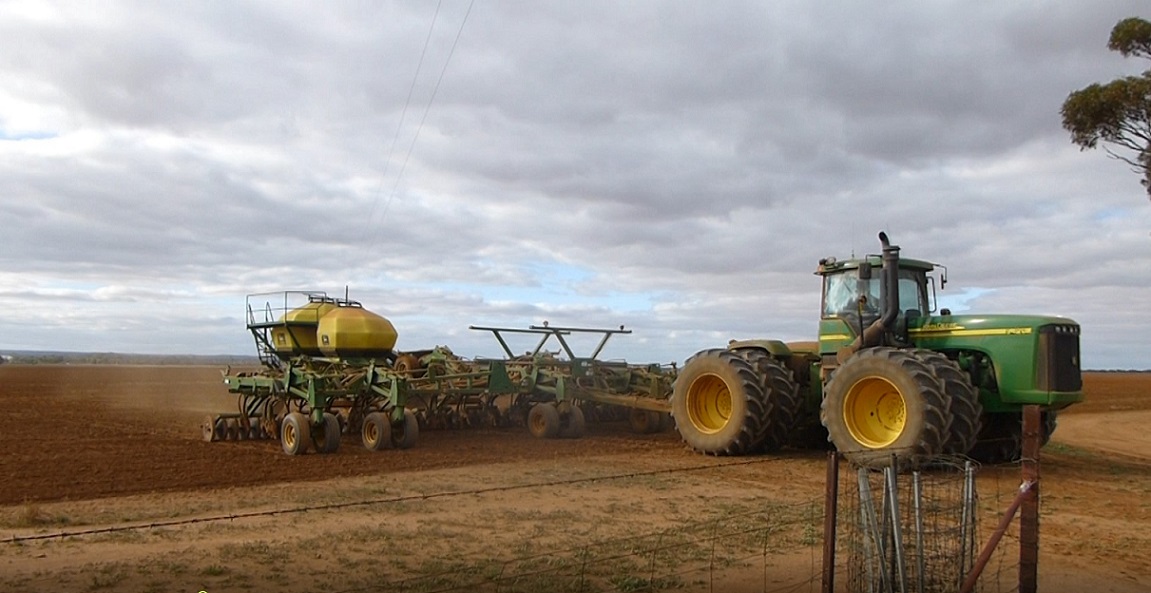
During seeding, there will also be trucks moving around the paddocks that are used to fill up the seeding rig box with seed and fertiliser when required. In the below photograph seed that is stored in a field bin is carried up into the truck using an auger.
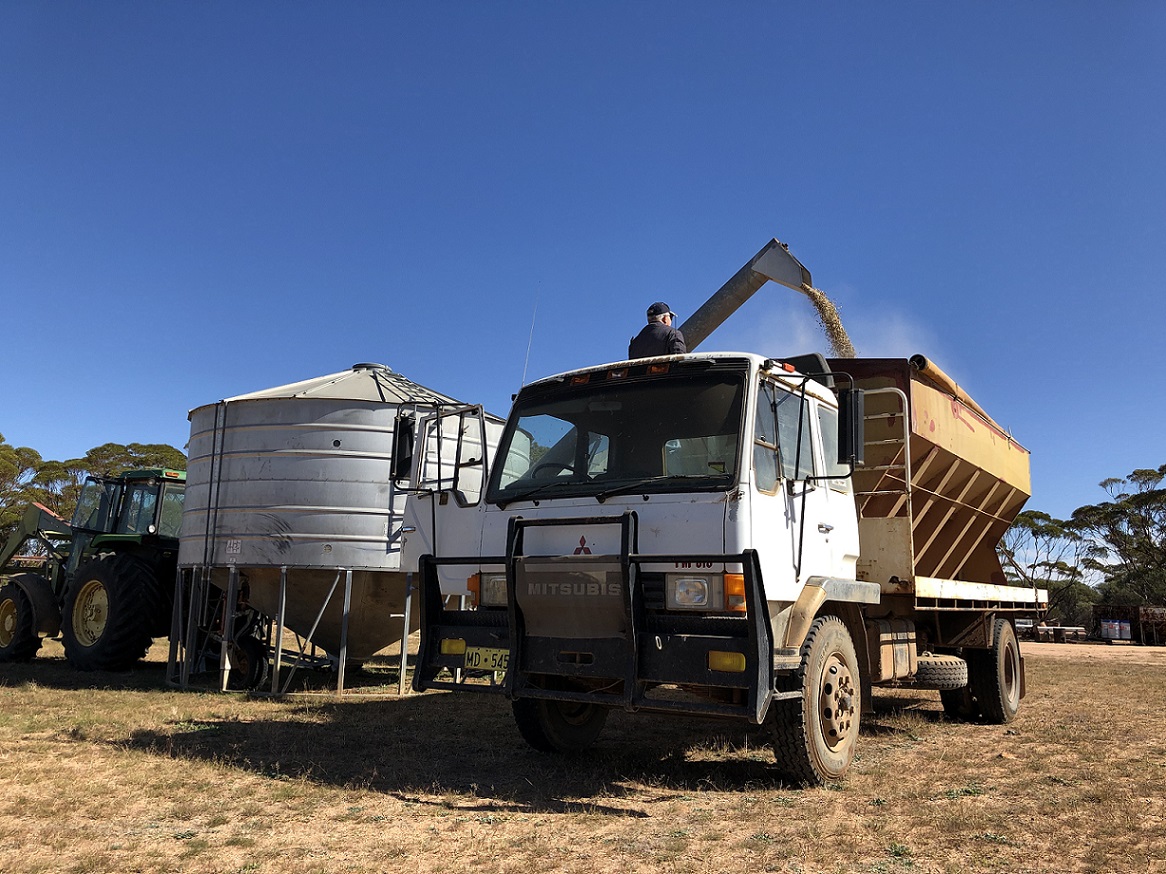
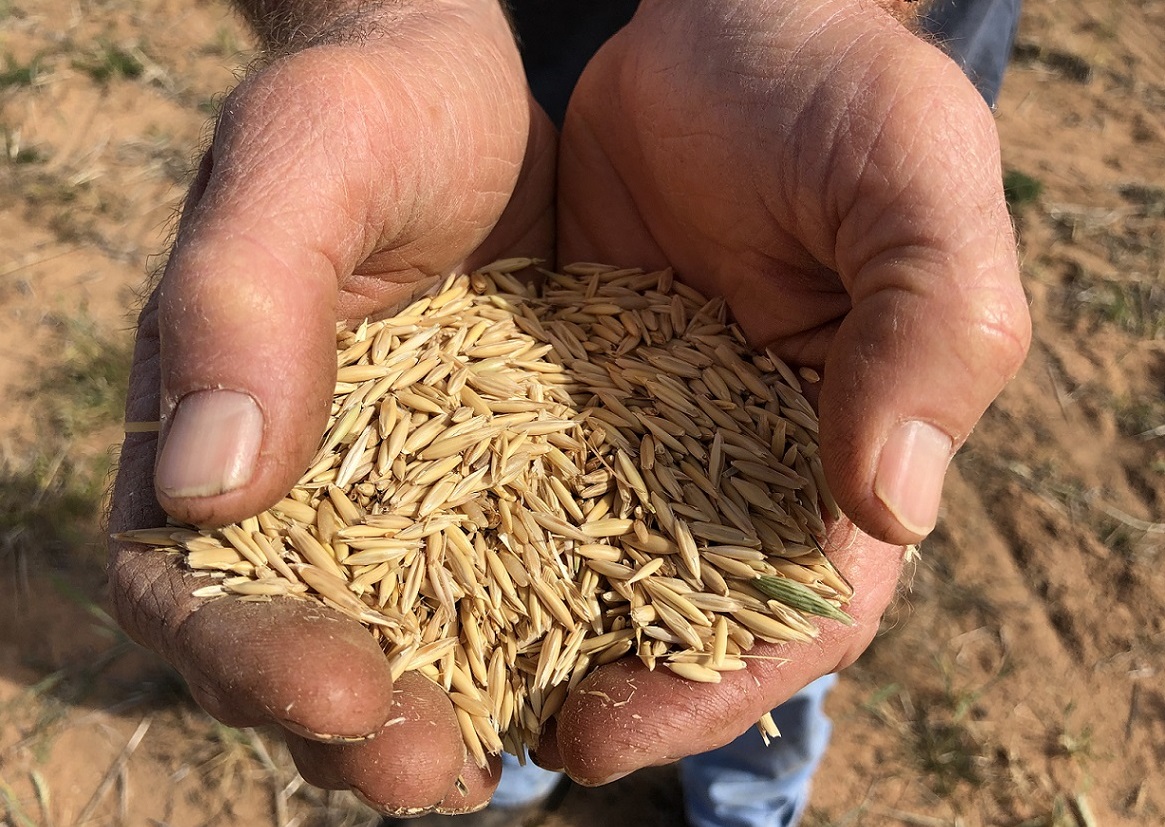
The well-worn hands of a farmer holding some oats that were grown in the Wheatbelt Way.
If you drive the Wheatbelt Way during seeding you will often see tractors working at night and will be convinced that the aliens have landed, as the tractor and seeding rig look very much like a large spaceship in the inky darkness.
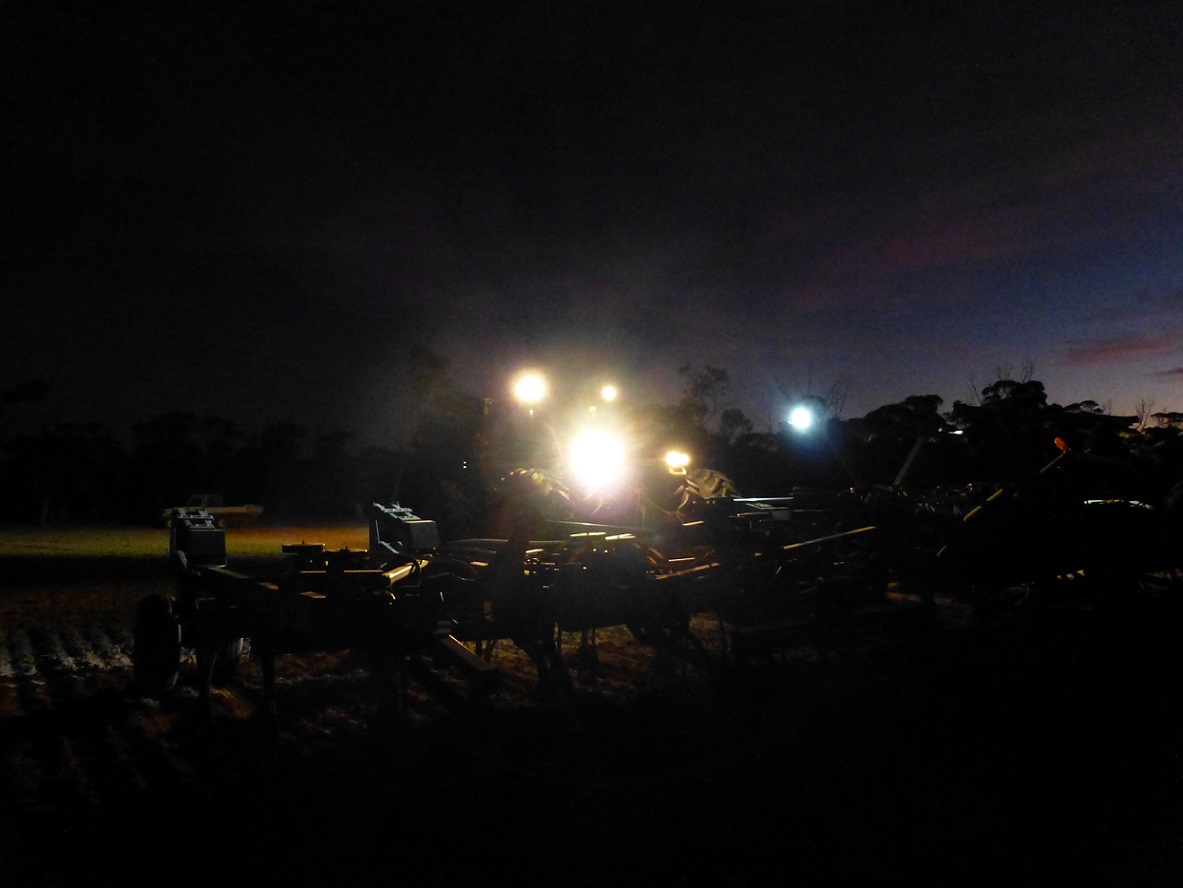
At this time of the year, you will also see paddocks being sprayed just before they are seeded, as chemical is used to kill off existing weeds in the paddock or to kill off weeds in the crop before they emerge. Weeds can otherwise choke the whole crop out, leaving very little to harvest at the end of the year. The below sprayer is a self-propelled model, though you will see other sprayers that are instead towed behind tractors.
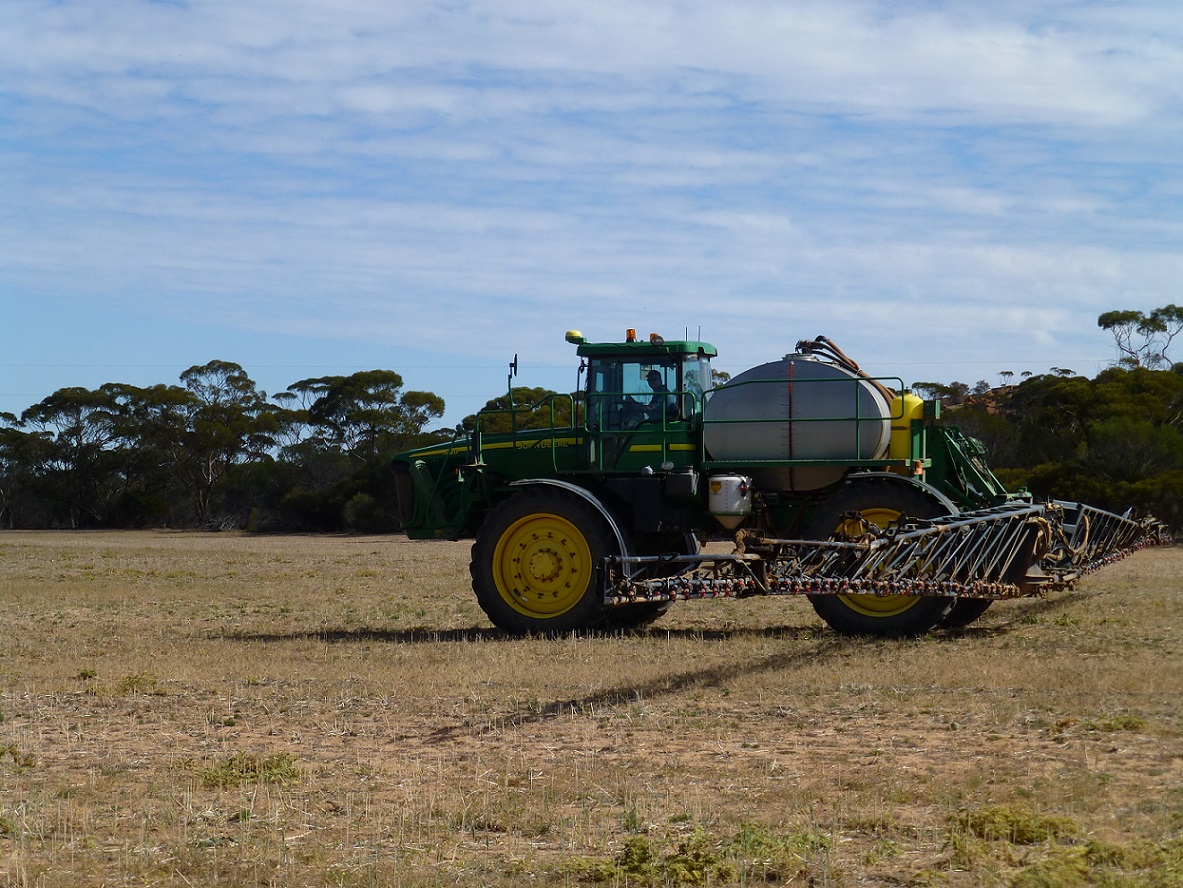
The smell of dust is constant during seeding. Even if there are good opening rains, there will still be some paddocks that are either seeded before the rain or are dry by the time they are seeded. The seeding rigs often emerge from the last paddock looking dusty, exhausted, and a lesser version of their former selves. The person driving the seeding rig often feels the same!!!
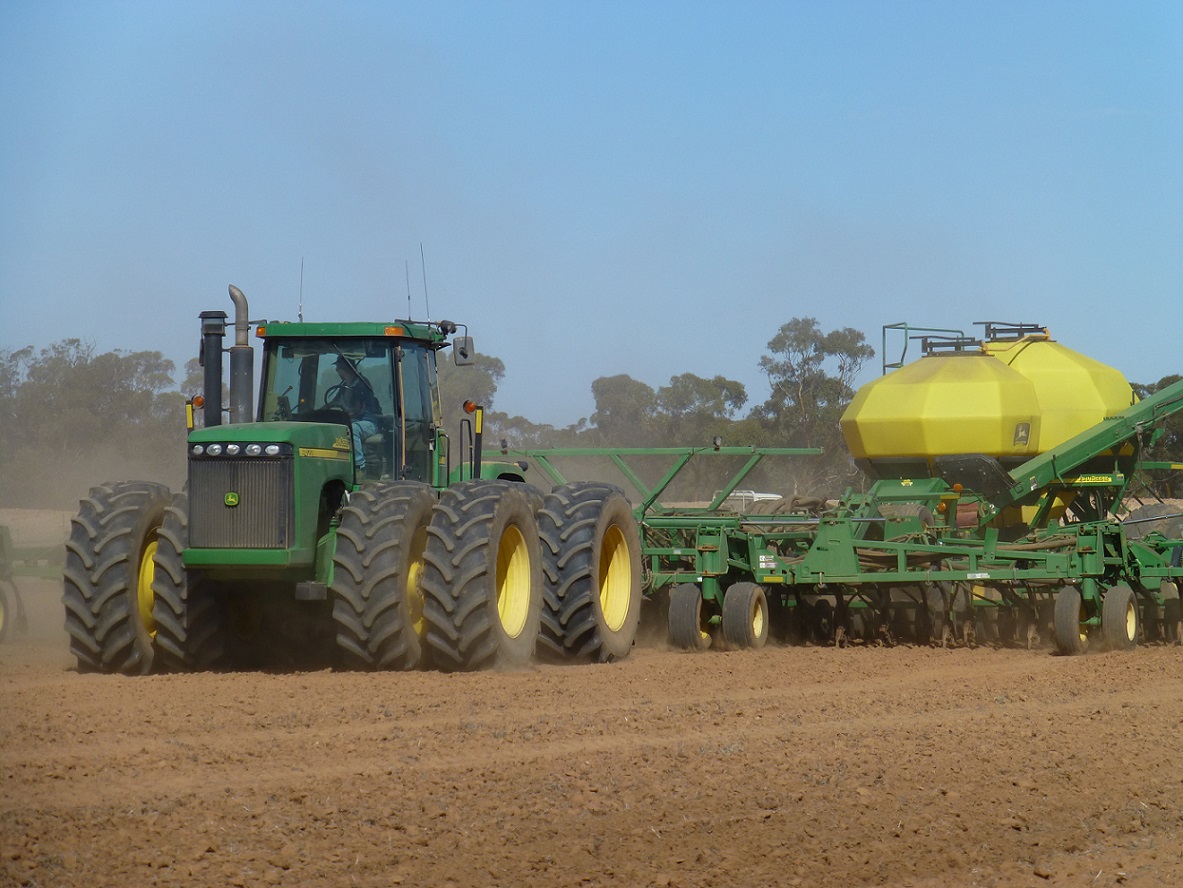
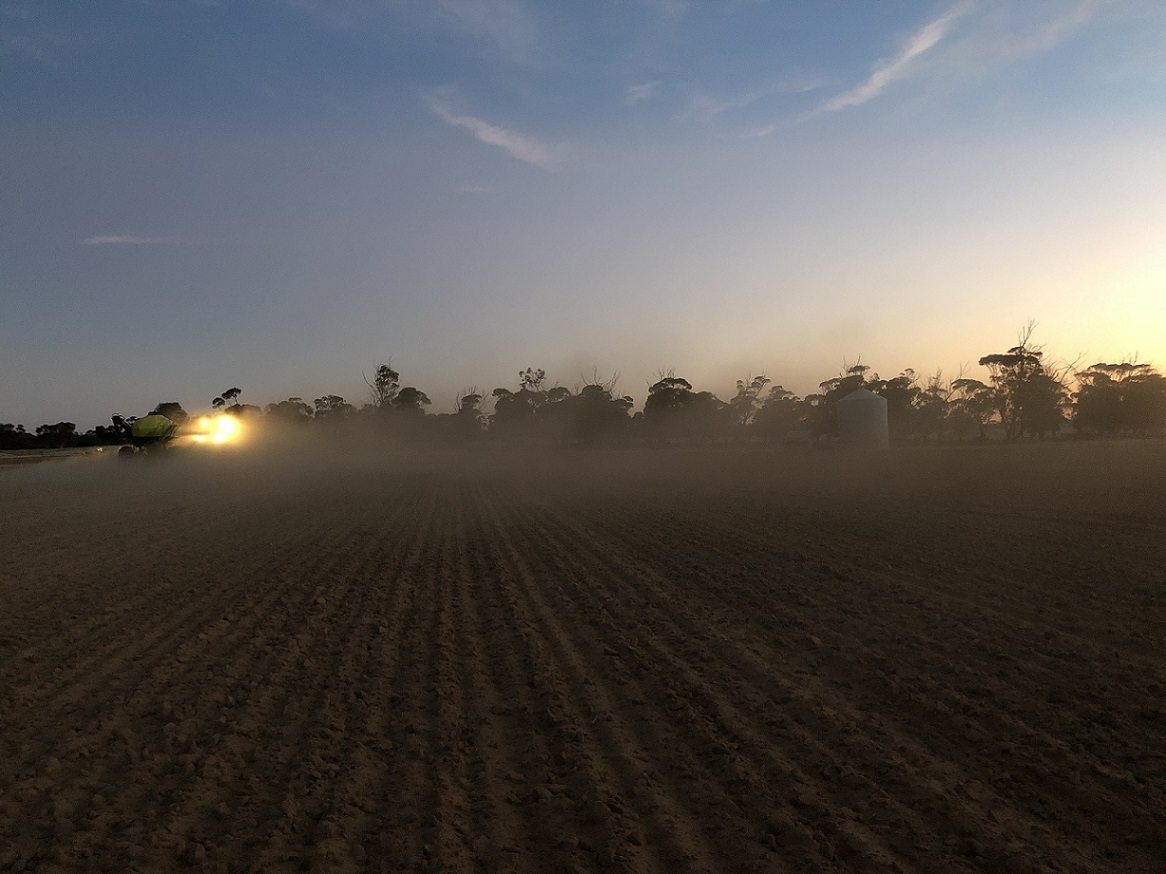

A band of dust across the horizon
If there is enough moisture either in the soil when the crop is seeded or enough rain is received after seeding, the crop will germinate as shown in the below photograph.
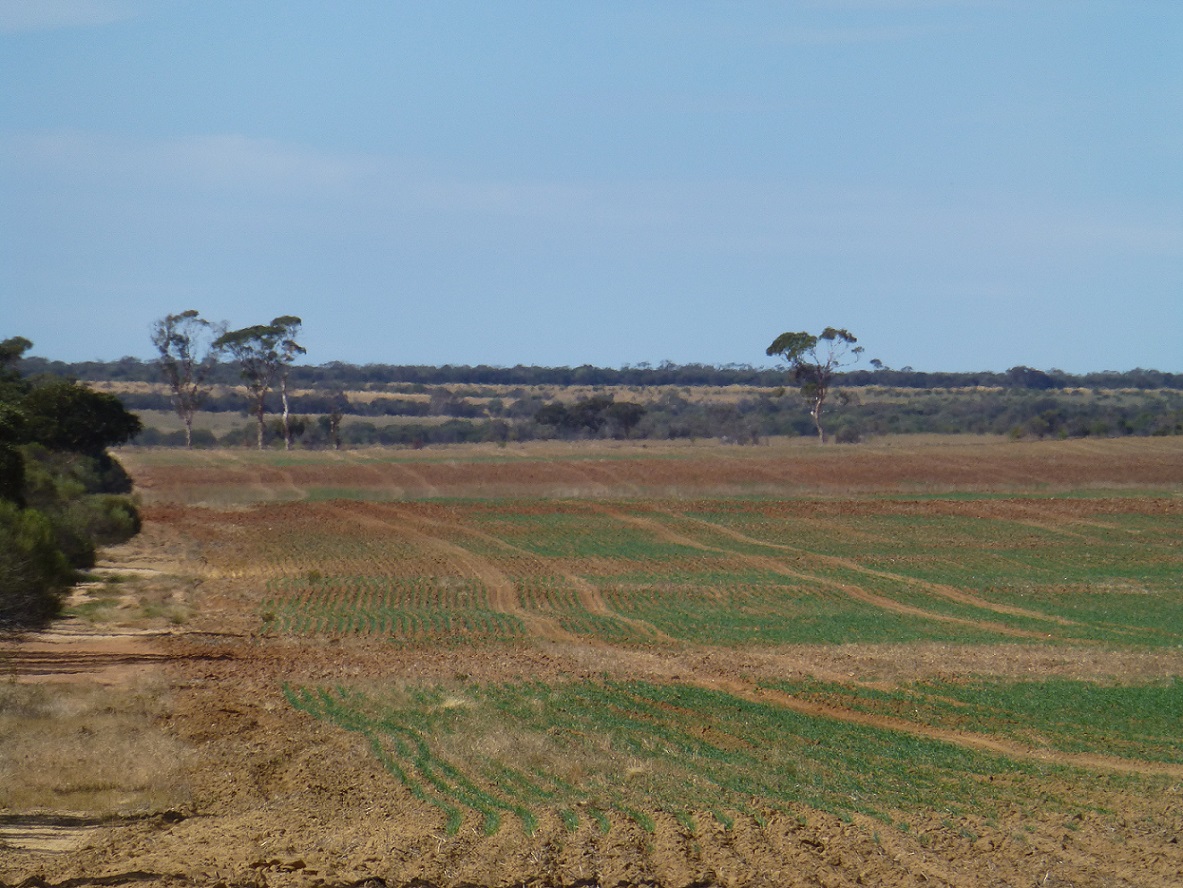
While seeding often entails long hours of work and sometimes no rainfall during the process to lift the spirits, nature does its best to reward those who spend time in it, as shown in the below photograph.
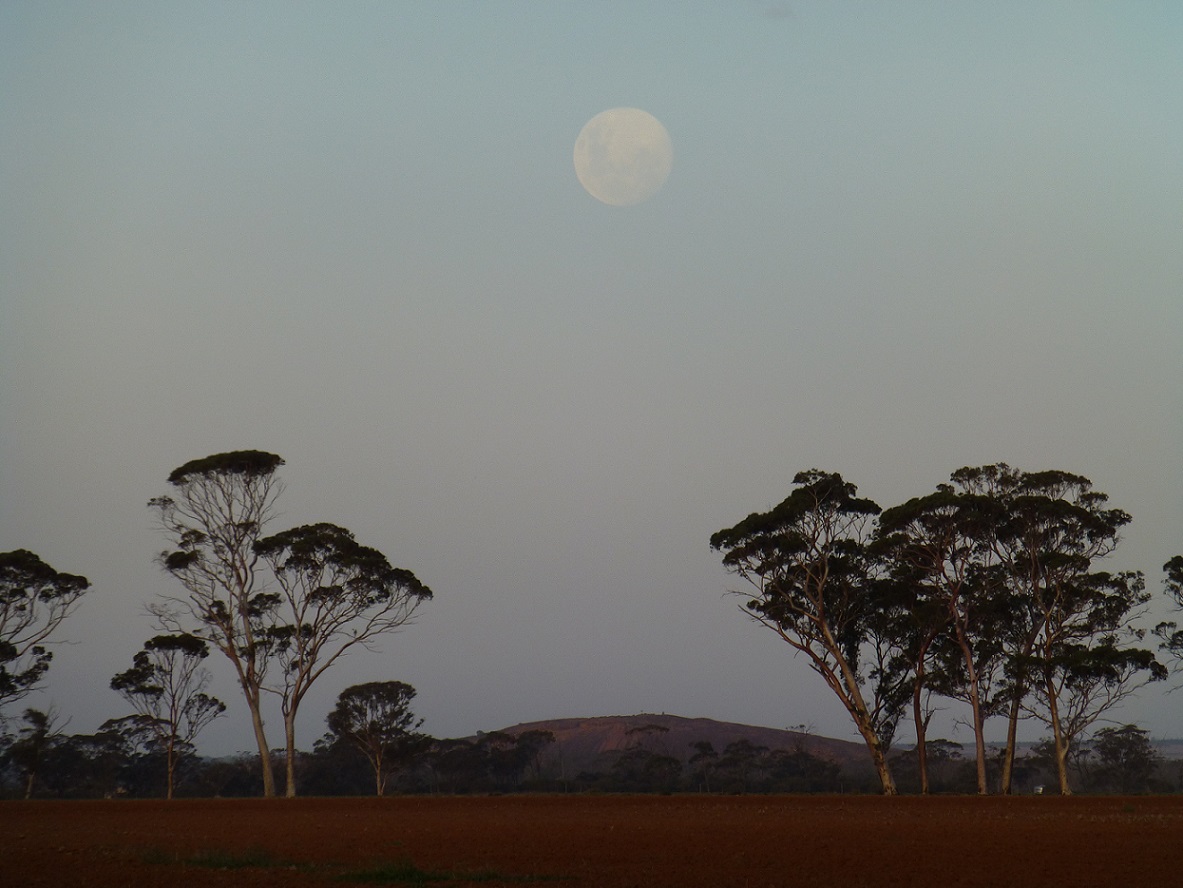
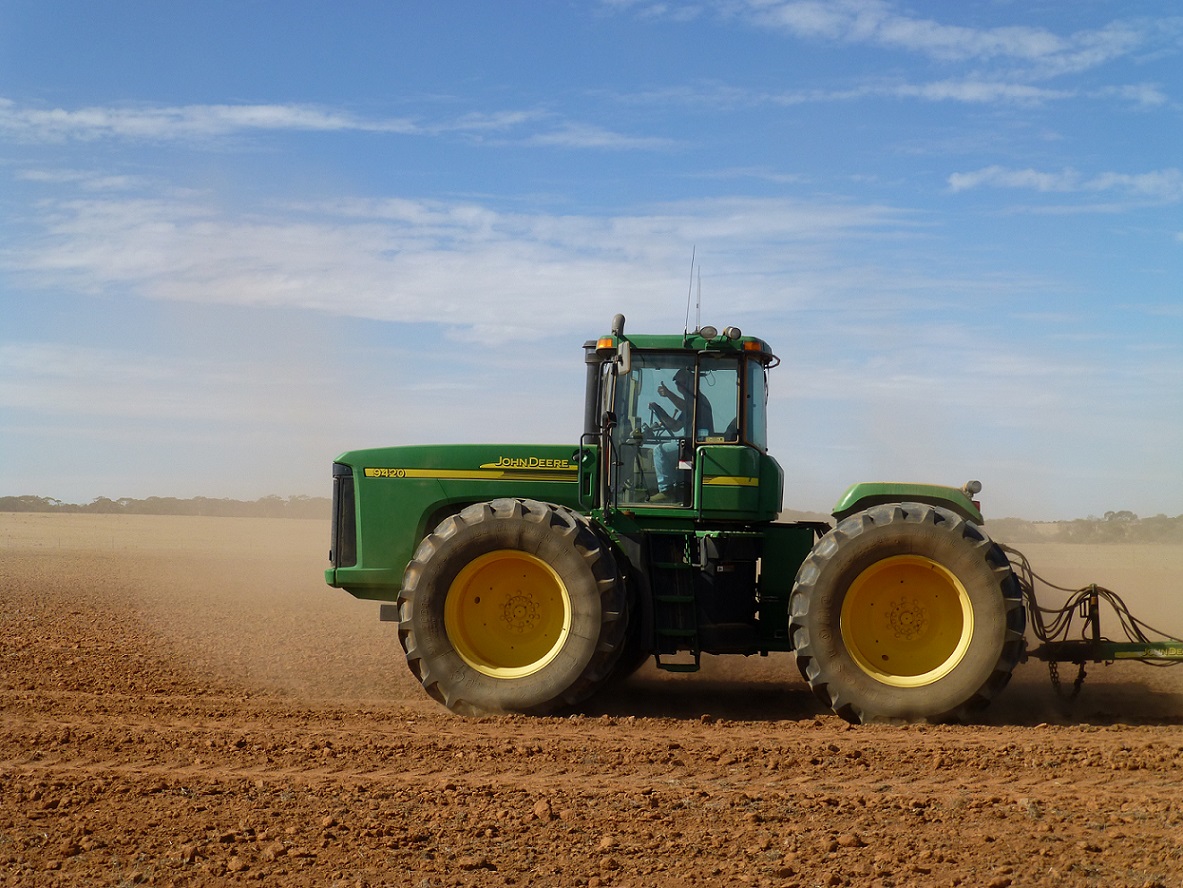
See you along the Wheatbelt Way!
By Annemaree Jensen who writes at www.extramilewriting.com.au. Huge thanks go to Tom Daddow for his generous assistance with this article.
